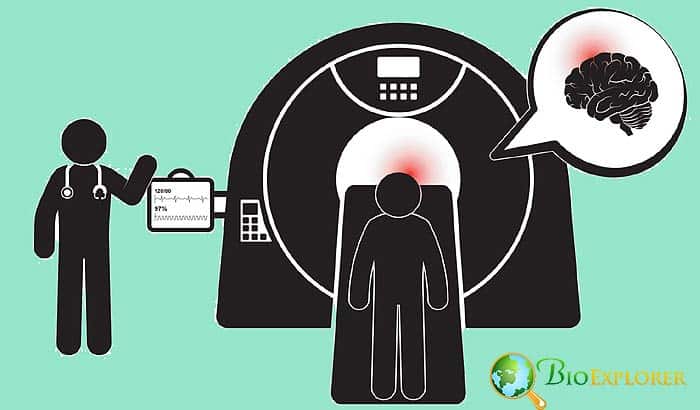
A radiologist is a specialist that uses radiological equipment for the diagnosis and treatment of patients. Explore the branches of radiology, different types of radiologists, and how to become a radiologist on this page.
A radiologist is a medical doctor who utilizes imaging methodologies to diagnose and treat patients and render therapeutic options.
Table of Contents
- Branches of Radiology
- Types of Radiologists
- Breast Diagnostic Radiologist
- Cardiovascular Radiologist
- Chest Radiologist
- Emergency Radiologist
- Gastrointestinal (GI) Radiologist
- Genitourinary Radiologist
- Head and Neck Radiologist
- Musculoskeletal Radiologist
- Neuroradiologist
- Pediatric Radiologist
- Interventional Radiologist
- Nuclear Radiologist
- Radiation Oncologist
- Radiologic Nurse
- How to Become A Radiologist?
- How Much Do Radiologists Make?
- Key References
Branches of Radiology
There are three primary disciplines within the field of radiology:

- Diagnostic Radiology: A diagnostic radiologist uses x-rays, radionuclides, ultrasound, and electromagnetic radiation to diagnose and treat diseases.
- Interventional Radiology: An interventional radiologist blends proficiency in imaging, image-guided minimally invasive procedures to diagnose and treat benign and malignant conditions in the thorax, abdomen, pelvis, and extremities.
- Radiation Oncology: A radiation oncologist uses ionizing radiation and other modalities to treat malignant and some benign diseases. Radiation oncologists may also leverage computed tomography (CT) scans, magnetic resonance imaging (MRI), ultrasound, and hyperthermia (heat) as additional interventions to support treatment planning and delivery.
Within these subdivisions, there are several subspecialties which will require additional training, examination, and certification:
- Hospice and Palliative Medicine.
- Neuroradiology.
- Nuclear Radiology.
- Pain Medicine.
- Pediatric Radiology.
- Vascular and Interventional Radiology.
- Medical Physics (Diagnostic Medical Physics, Nuclear Medical Physics, Therapeutic Medical Physics).
![]()
Types of Radiologists

Breast Diagnostic Radiologist
This radiology subspecialty dedicated to the diagnostic imaging and diagnosis of breast diseases and related conditions. They use imaging techniques such as mammography, breast ultrasound, breast MRI, and breast biopsy.
![]()
Cardiovascular Radiologist
The cardiovascular radiologist specializes in the diagnostic imaging and diagnosis of diseases of the heart and circulatory system (including blood and lymphatic vessels). The imaging techniques used by these specialists include X-rays, CT scans, ultrasound, and MRI scans.
![]()
Chest Radiologist
The chest radiologist specializes in diagnostic imaging and diagnosis of diseases of the heart and lungs (chest area). The chest radiologists use X-rays, CT scans, ultrasound, MRI scans, and chest area-specific procedures such as lung biopsy and drainage of fluid from the chest.
![]()
Emergency Radiologist
The emergency radiologist focuses on the diagnostic imaging and diagnosis of trauma and non-traumatic emergency conditions. These doctors use imaging techniques such as X-rays, CT scans, Ultrasound, and MRI scans.
![]()
Gastrointestinal (GI) Radiologist
The GI radiologist devotes to the diagnostic imaging and diagnosis of the GI or digestive tract and abdomen. The image techniques used by these diagnostic imaging specialists are Fluoroscopy, X-rays, CT scans, Ultrasound, MRI scans, and GI specific procedures such as biopsy and fluid and abscess drainage.
![]()
Genitourinary Radiologist
The genitourinary radiologist specializes in the diagnostic imaging and treatment of the reproductive and urinary organs related diseases. They use X-rays, CT scans, MRI scans, and specific procedures such as biopsy, kidney stone removal, and uterine fibroid removal.
![]()
Head and Neck Radiologist
The ‘head and neck‘ radiologist specializes in the diagnostic imaging and diagnosis of head and neck related diseases.
![]()
Musculoskeletal Radiologist
The musculoskeletal radiologist specializes in the diagnostic imaging and diagnosis of the diseases related to muscles and skeleton.
![]()
Neuroradiologist
The Neuroradiologist specializes in the diagnostic imaging and diagnosis of the brain and nervous system-related diseases, including head, neck, and spine.
![]()
Pediatric Radiologist
The pediatric radiologist trains in the diagnostic imaging and diagnosis of diseases in children.
![]()
Interventional Radiologist
The interventional radiologist specializes in the diagnostic imaging, and treatment for patients employing minimally invasive interventional procedures such as angiography, angioplasty, and stent placement, biopsy procedures, line and tube placement, uterine fibroid removal, or fluid and abscess drainage.
![]()
Nuclear Radiologist
The nuclear radiologist specializes in the imaging, diagnosis, and treatment of patients using trace doses of radioactive material. The techniques include imaging of the heart, the skeletal system, and most organs in the body. They use standard imaging techniques such as CT scans and MRI scans. However, they also utilize gamma imaging, and positron emission tomography (PET) scans.
![]()
Radiation Oncologist
The radiation oncologist specializes in the diagnosis and treatment of cancer using radiation.
![]()
Radiologic Nurse
A radiologic nurse offers the physical, mental, and emotional support within the radiology department for patients undergoing tests or treatment. The radiologic nurse performs examinations of patients within the prescribed guidelines and instructions from a registered radiologist. The radiologic nurses also record physician findings and discuss them with radiologists and other health care professionals.
![]()
How to Become A Radiologist?

To become a radiologist, one should:
- Graduate high school with a high GPA.
- Complete a so-called “pre-med” Bachelor’s degree with courses in Biology, Physics, Chemistry, and Math, including laboratory practice.
- Volunteer in different settings, preferably related to the medical field.
- Pass the Medical college admission test (MCAT).
- Obtain a medical degree at a licensed medical school (requires 4 years of training, including internship) or osteopathic school.
- Pass the three stages of the United States Medical Licensing Exam (USMLE).
- If you study at an osteopathic school, you would need to pass `the United States Comprehensive Osteopathic Medical Licensing Examination (COMLEX-USA).
- Join a residency in radiology (6 years). There are three tracks:
- Diagnostic radiology.
- Interventional radiology.
- Diagnostic and interventional radiology.
- Get board certified in Diagnostic or Interventional Radiology from the American Board of Radiology (ABR).
- Optionally, join a 2-year fellowship in a radiology subspecialty:
- Radiation oncology.
- Pediatric radiology.
- Women’s (Breast) Imaging.
- Cross-sectional body imaging.
- MRI imaging.
- Neuroradiology.
- Muskuloskeletal Imaging.
- Nuclear medicine.
- Pain medicine.
- Palliative medicine.
- Get certified by the American Board of Radiology or American Osteopathic Board of Radiology in the chosen subspecialty.
![]()
How Much Do Radiologists Make?
Radiologists are among the wealthiest type of doctors after cardiologists. The average salary for a radiologist in the United States is between $356,890 and $474,890 per year.
![]()
Cite This Page
Key References
- “Diagnostic Radiology Professions”. Accessed December 27, 2019. Link.
- “Radiology Careers – Radiologist Education, Job Descriptions & Salary Info”. Accessed December 27, 2019. Link.
- “Diagnostic Radiology Residency Program”. Accessed December 27, 2019. Link.
- “Diagnostic Radiology – The American Board of Radiology”. Accessed December 27, 2019. Link.
- “Fellowships | Johns Hopkins Radiology”. Accessed December 27, 2019. Link.
- “Subspecialties – The American Board of Radiology”. Accessed December 27, 2019. Link.
- “The Radiologist as a Palliative Care Subspecialist: Providing Symptom Relief When Cure Is Not Possible” – American Journal of Roentgenology. Accessed December 27, 2019. Link.
- “The American Board of Radiology”. Accessed December 27, 2019. Link.
- “AOA Osteopathic Board Certification in Radiology”. Accessed December 27, 2019. Link.
- “Radiologist Salary | Salary.com”. Accessed December 27, 2019. Link.

















